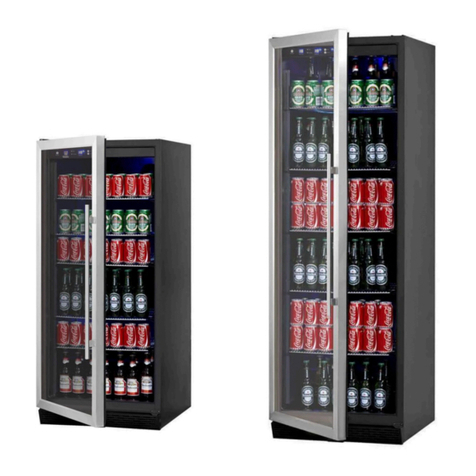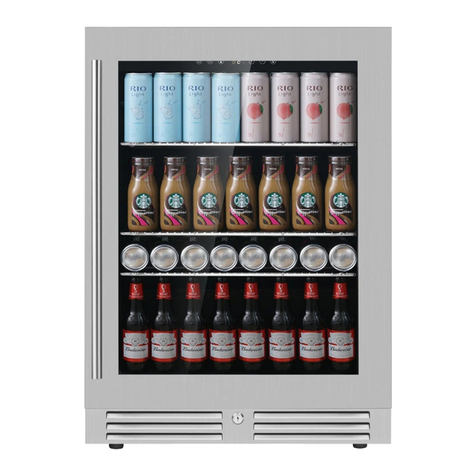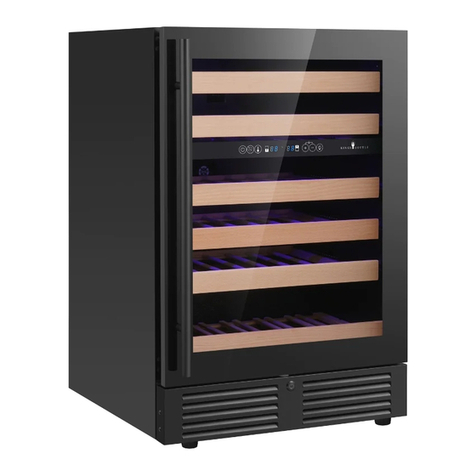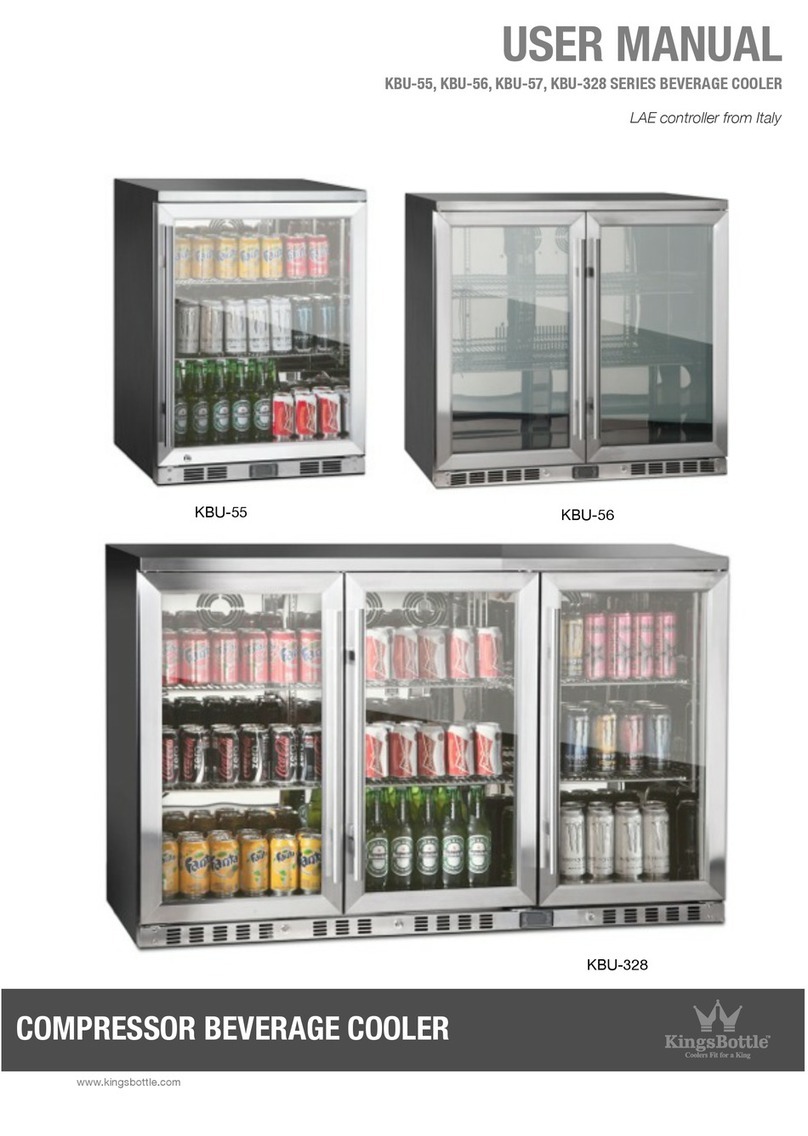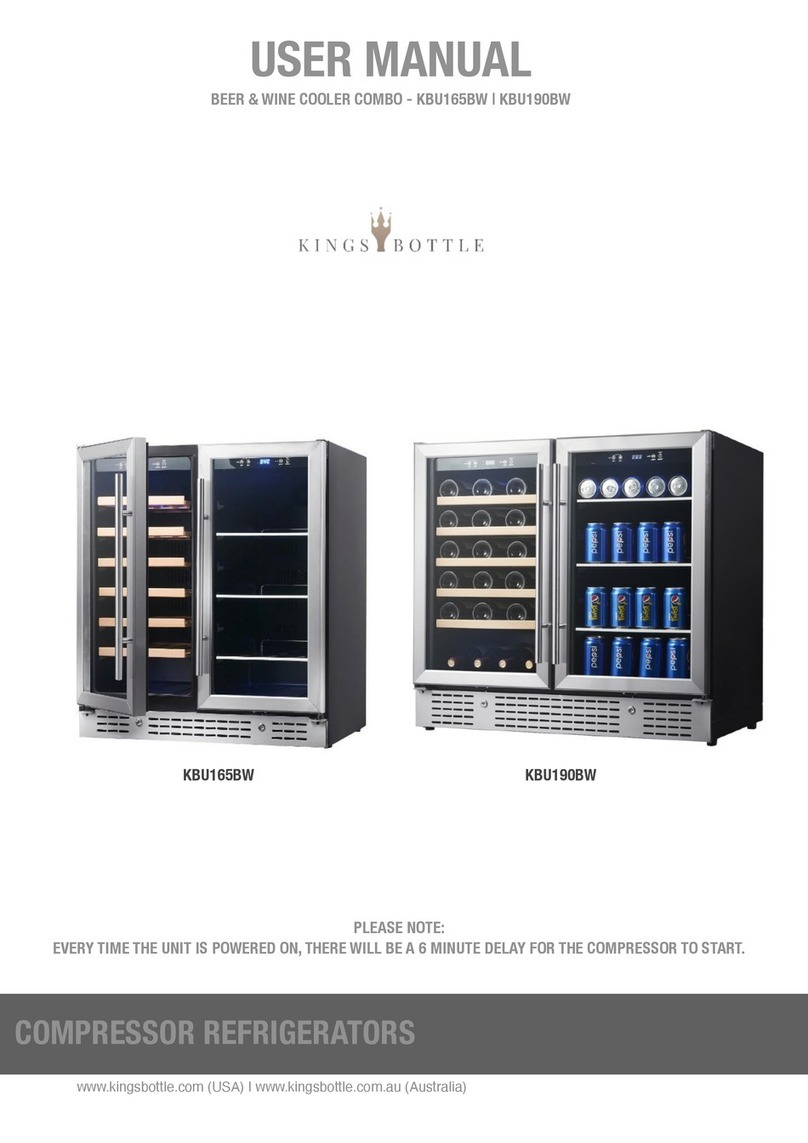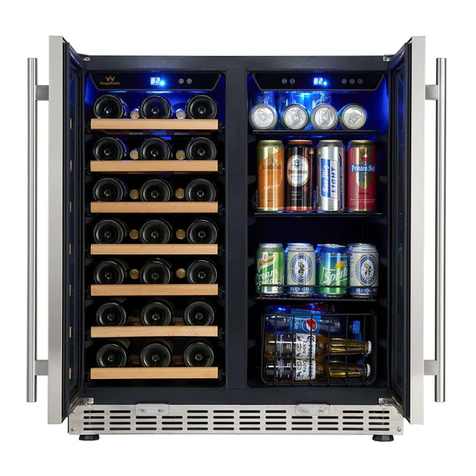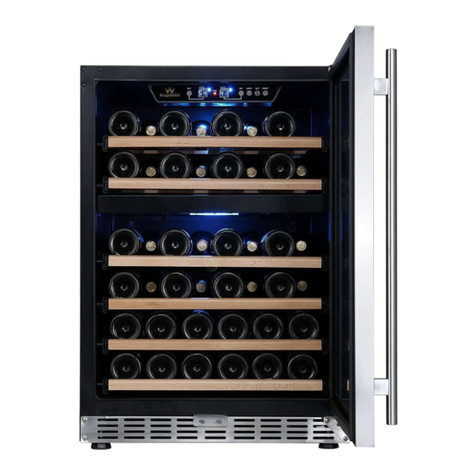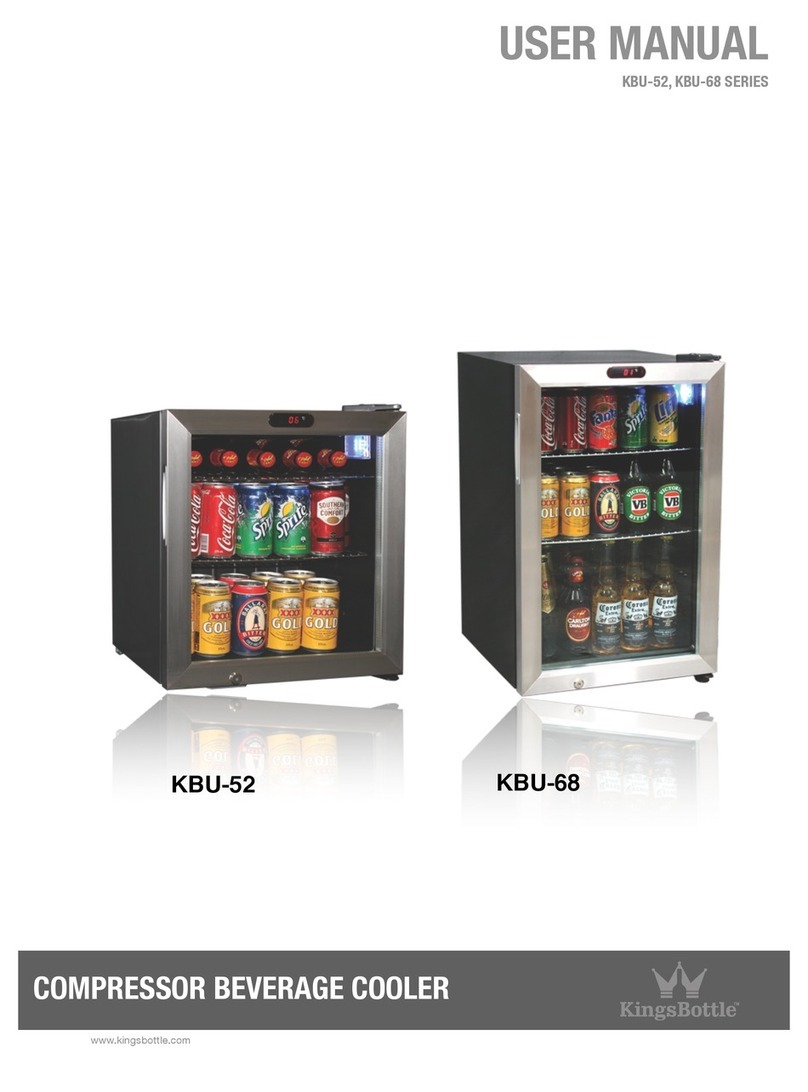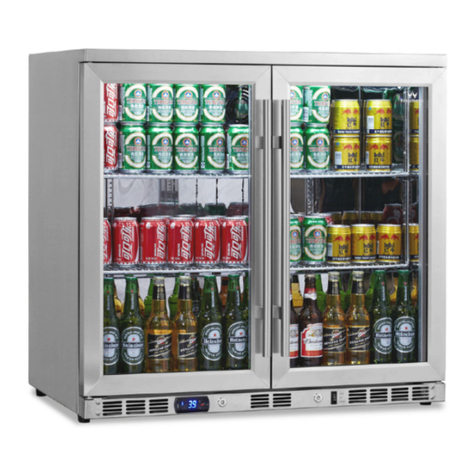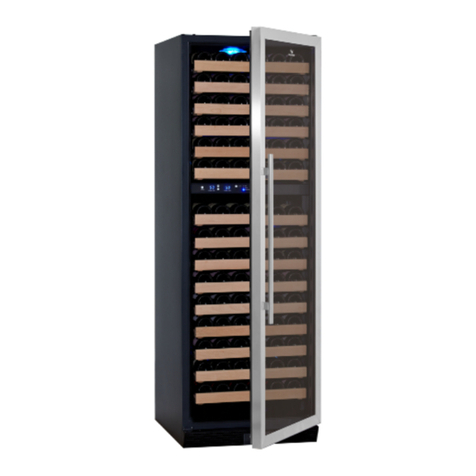
PART IV"OPERATING YOUR REFRIGERATOR
Each refrigerator includes an operating panel on the front of the unit. This operating panel includes several features to operate and control the temperature of
both the LEFT and RIGHT zones of the refrigerator.
The operating panel includes the following features:
ON/OFF: Turns the refrigerator power on or off.
SET : Select temperature display setting from Fahrenheit to Celsius degree by pushing the “SET” button. Fahrenheit or Celsius degree indicator will appear in
blue color in the “0°C” or “0°F” window.
LIGHT: Turns the interior refrigerator light on or off.
C/F SWITCH: Switch between °C and °F
CAUTION:
BEFORE YOU START: The refrigerator should be placed in a location where the ambient temperature is between 32°F - 100°F degree Fahrenheit (1°C to
38°Ç). If the ambient temperature is above or below this range, the performance of the unit may be affected. For example, placing your unit in extreme cold or
hot conditions may cause interior temperatures to fluctuate.
SETTING THE TEMPERATURE CONTROL
1. Make sure power cord is connected to a properly grounded outlet.
2. Turn Power ON.
3. Each zone is independently controlled.
•LEFT Zone: The temperature setting can be adjusted between 34°F to 64°F
•RIGHT Zone: The temperature setting can be adjusted between 34°F to 64°F
4. Set the temperature of the LEFT Zone or RIGHT Zone as you desire by pushing the UP (+) or DOWN (-) button. When you push the two buttons for the
first time, the LED readout will show the original temperature set at previous time.
5. Once you have set the desired temperature, wait 5 seconds. The temperature shown in the both LEFT and RIGHT zone display panels will automatically
switch to show the actual temperature inside the unit. The actual temperature will always be shown until the next time you press the UP (+) or DOWN (-)
button to change the temperature settings.
NOTE: The desired temperatures may fluctuate depending on whether the interior light is ON or OFF, the ambient temperature, the location of unit and the
orientation of the bottles. The display is just a guide, be guided by how cold your drinks are at consumption. Remember units go into defrost mode and this
will show a higher display, it’s only for short periods and doesn’t have time to effect drink temperature. In general once unit has settled it will keep products
within 5°F ( 2°C ) of the set temp easily in temperatures up to and beyond 100°F ( 38°C ) .
TEMPERATURE SETTINGS FOR WINE SERVICE
Different varietals of wine require different temperature settings. The recommended temperature ranges for serving different varietals of wine are listed below.
Your refrigerator will indicate when you have set the LEFT/RIGHT zones to the below temperature ranges.
•Red Wines: 52-64°F
•White Wines: 44-51°F
•Sparkle Wines: 41-43°F
1. In the event of a power interruption, all previous temperature settings will be automatically saved and each compartment will return to the previous
temperature setting.
2. If the unit is unplugged, loses power, or is turned off, there will be a 6 minute delay for the compressor to restart after the unit is powered ON.
3. When you use the refrigerator. for the first time or restart the refrigerator after having been shut off for a long time, there will be a few degrees variance
between the temperature you select and the one indicated on the LED readout for the first few hours of operation. After a few hours of operation, the
temperature will normalize to the displayed temperature.
place for later reference.
The symbols you will see in this booklet have these meanings:
Meanings of symbols used in this manual are shown below:
‘flammable’ and/or a small flame symbol,
do not store them inside any refrigerator or
freezer. If you do so you may cause an explosion.
remove any doors. Children can suffocate if they get
trapped inside.
blowing gases. Avoid safety hazards by carefully
disposing of this appliance.
The refrigerator must be plugged into its own
dedicated 220-240V, 50Hz AC electrical outlet.
The plug must be accessible when the refrigerator is
in position.
It is essential the power point is properly earthed to
ground.Consult a qualified electrician if you are unsure.
Don’t use extension cords or adapter plugs with this
refrigerator.
If the power cord is damaged, have it replaced by a
qualified service technician.
Unplug the refrigerator before cleaning it, or changing
the light bulb to avoid electric shock.
Never unplug the refrigerator by pulling the electrical
cord as this may damage it. Grip the plug firmly and
pull straight out.
Choose a location for your refrigerator that isn’t too cold.
The ambient room temperature should be above 10°C.
Stand your refrigerator in a dry place – avoid areas
of high moisture or humidity.
Don’t put the refrigerator in frosty or unprotected areas
like a garage or on the verandah.
Keep the refrigerator out of direct sunlight.
Don’t locate the refrigerator near stoves, fires or heaters.
When installed correctly, your refrigerator should:
– Have adequate space at the back and sides
for air circulation (refer to page 9).
– Be aligned to the surrounding cupboards.
– Have doors that will self-close from a partially
open position.
This appliance may contain a small quantity of environmentally
friendly, but flammable, non-synthetic R600a refrigerant:
damaged during transportation and installation.
8g of refrigerant. The amount of refrigerant charged in the
appliance can be found on the rating plate on the appliance.
in the built-in structure, clear of obstruction.
accelerate the defrosting process, other than those
recommended by the manufacturer.
3
per 8g of refrigerant. The amount of refrigerant charged
in the appliance can be found on the rating plate on
the appliance.
